* Information concerning affiliation/post/profile of the laureate and guests is current at the time he/she received the prize.
2021 Honda Prize Commemorative Talk Session
Talk Session Member
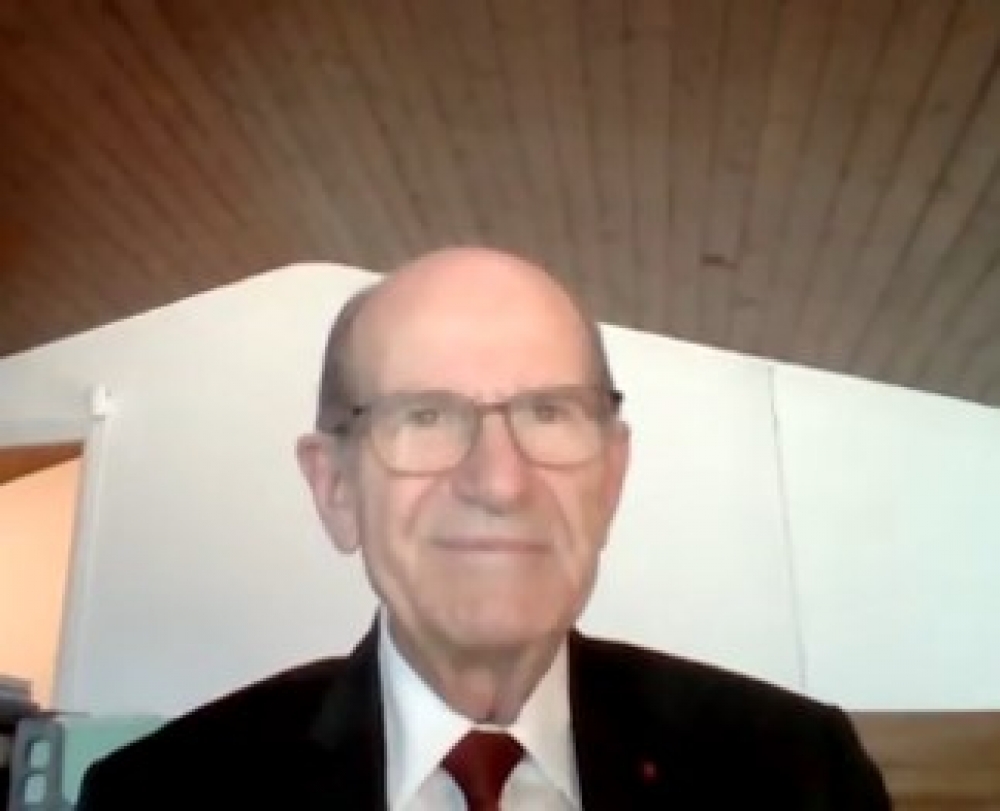
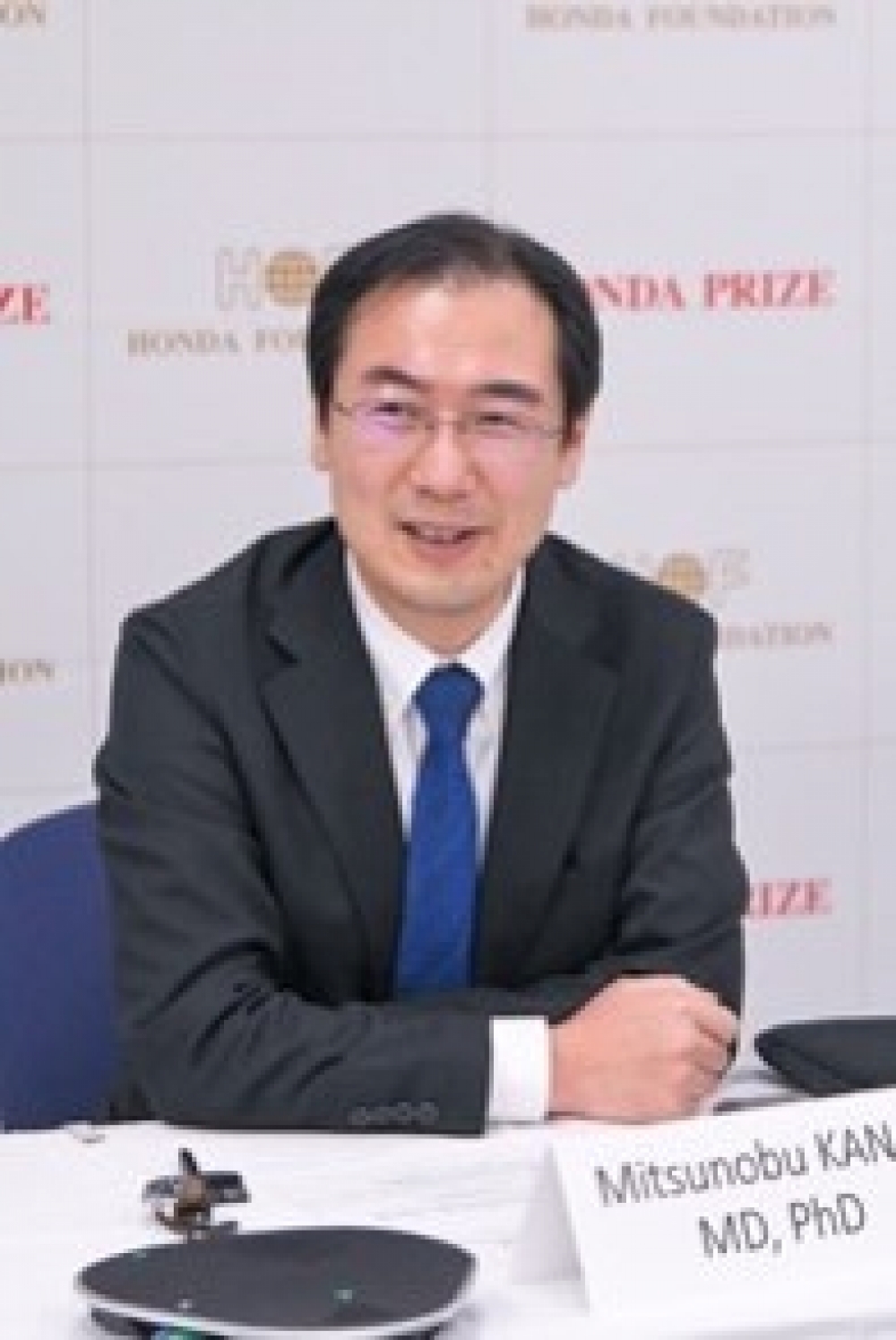
Executive Director, Honda Foundation
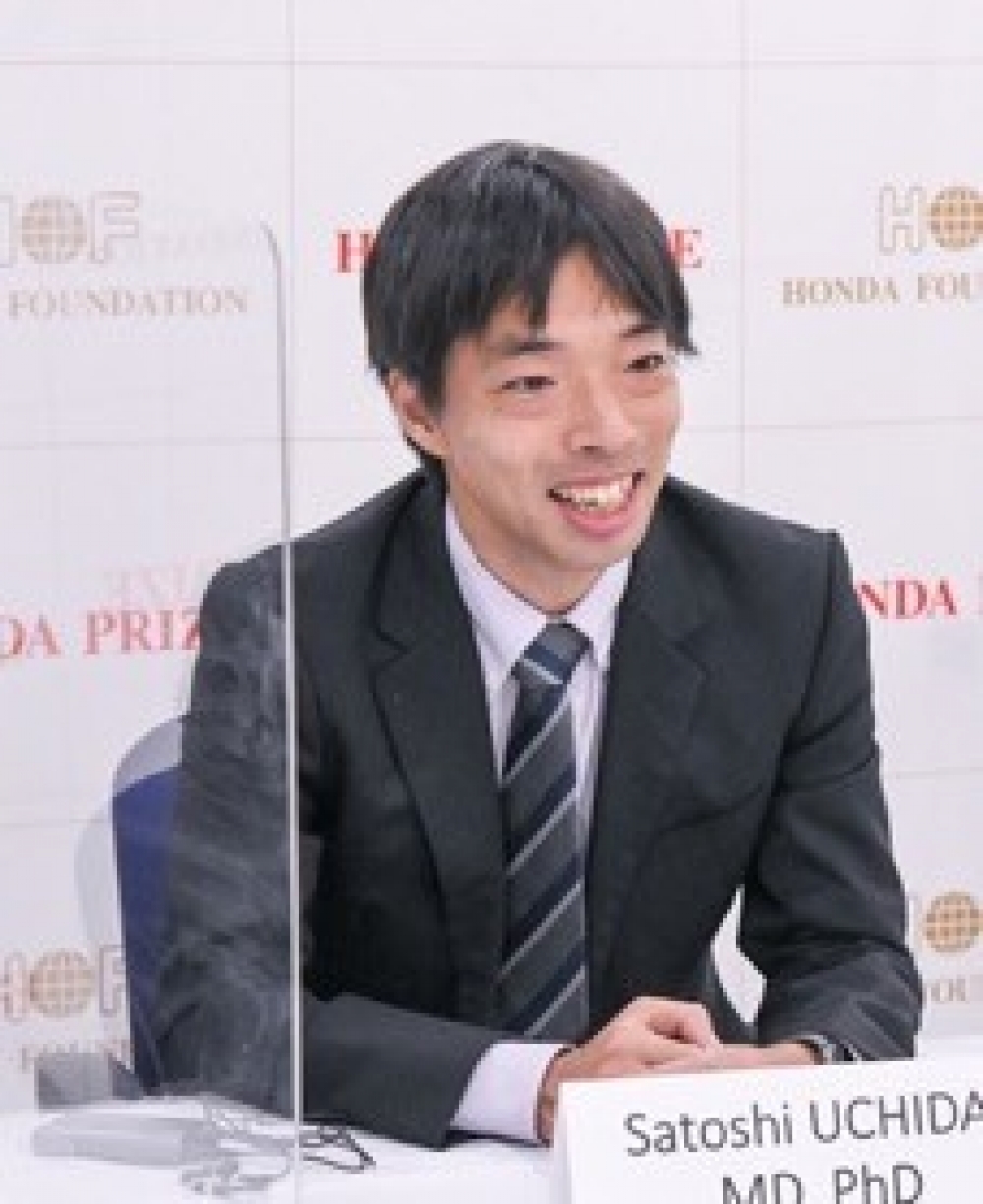
Graduate School of Medicine,
Kyoto Prefecture University of Medicine
Medical chemistry Associate Professor
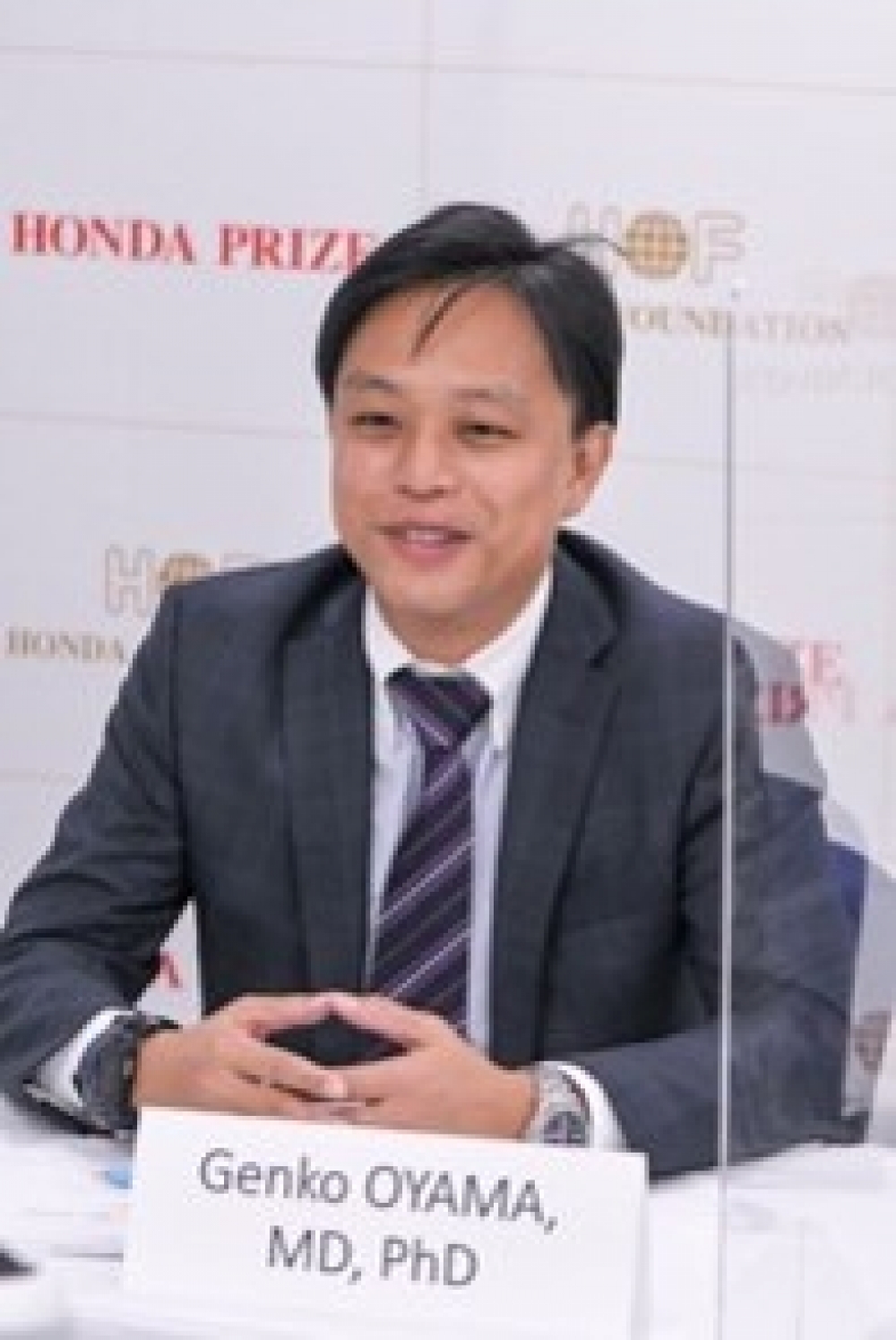
Associate Professor,
Department of Neurology,
Juntendo University
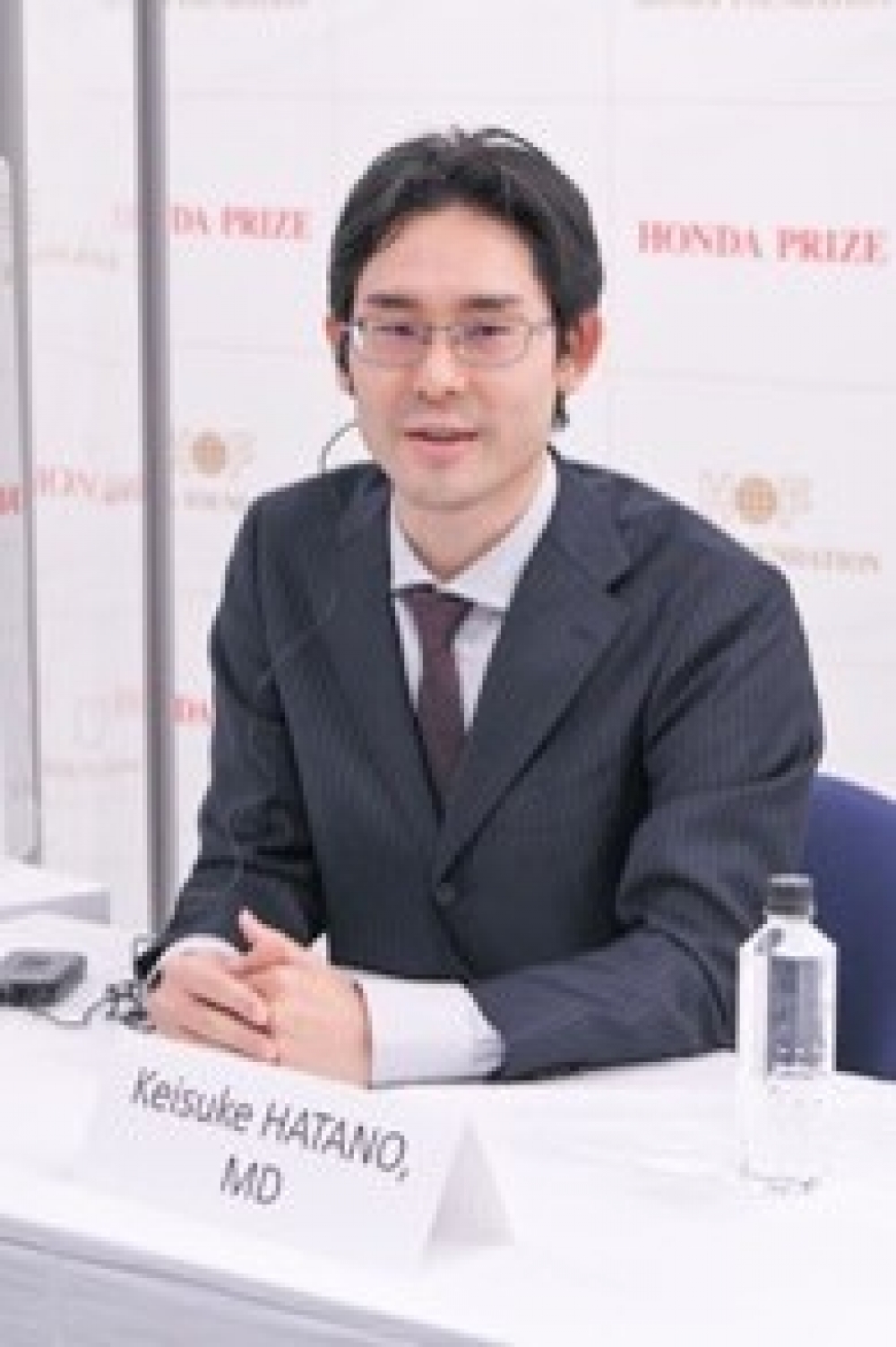
Seirei Hamamatsu General Hospital,
Epileptology Specialist in Neurosurgery
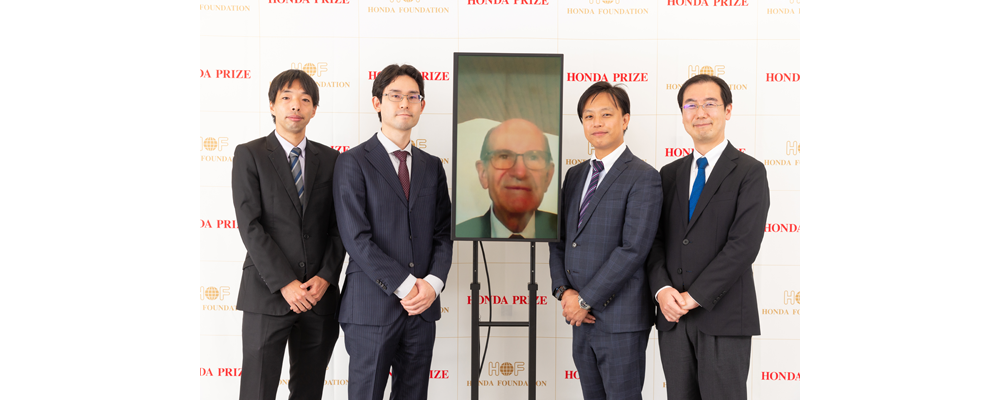
Move slowly and carefully, if not in a hurry
Dr. Kano: Today, we have three medical specialists representing different fields gathered here. We would like to spotlight the great accomplishment made by Dr. Benabid and to ask him to give a message to the younger generation of doctors around the world, to serve as their benchmark in taking on new challenges. Please take your turn and ask your question to Dr. Benabid.
Dr. Hatano: I am a neurosurgeon like Dr. Benabid. DBS requires you to reach into the depth of the brain, an area that neurosurgeons have been reluctant to touch. What made you decide to embed electrodes in such a difficult area?
Dr. Benabid: Neurosurgeons believed this area to be delicate and dangerous because that is where irreversible "destructive lesions" were handled in conventional surgery. To curb the symptoms, cells must be destroyed within a very narrow range. Destruction of other spaces will cause neurological disorders and complications. However, low frequency or high-frequency stimulation targets activation of the nerve nucleus and does not distract from anything. The procedure has become safe for the neurosurgeon and all the more for the patient. DBS carries the risk of damaging blood vessels when inserting electrodes, with hematoma resulting in complications. Electrodes are embedded deep in the brain carefully, with attention given to the reactions of the patient. Unlike myocardial infarction surgery, which must be executed urgently, DBS is a procedure that should be conducted slowly, to minimize side effects for the patient.
Dr. Oyama: I am a movement disorder neurologist and I examine patients together with neurosurgeons. My question concerns lobotomy, which you referred to in your commemorative lecture. It was initially believed to be an innovative surgical procedure but is rejected today. What is your opinion on the benefits and setbacks of lobotomy?
Dr. Benabid: Lobotomy, which modifies symptoms with brain surgery, was revolutionary for patients with neurological disorders who suffered from serious problems in everyday living. However, the procedure involves irreversible dissection of the frontal lobe and causes undesirable effects. For this reason, we experimented with the method of stimulating with electrodes, as a procedure that is reversible when the electrodes are removed. Fortunately, electrode stimulation showed a therapeutic effect and resulted in the choice of high-frequency DBS. It also drew the support of patient associations as an effective treatment method involving little risk.
Dr. Oyama: You have made great accomplishments in the area of DBS. However, you are moving forward into the new area of near infrared treatment. Why were you motivated to study this?
Dr. Benabid: As Parkinson's is a progressive disease, the symptoms will eventually become uncontrollable with DBS. For this reason, I began to examine how to stop the progress of the disease altogether. In the nerve cells of Parkinson's patients, the mitochondria that serves as "the factory of energy" do not function properly. When I was looking into stimulating it with light, Dr. John Mitrofanis, a professor of neuroanatomy in Sydney, provided the clue to the optimal wavelength. The first patient to undergo the near infrared procedure recovered to the point of being able to lace her shoes a month later. If the long-term prognosis proves to be good, we may be able to apply this to patients in the early phase of Parkinson's who are not showing symptoms yet. It may become the first treatment method that can stop the progression of the disease.
The two doctorates are proof of being "a good boy"
Dr. Uchida: After a two-year residency as a medical doctor, I am engaged in basic research chiefly in the development of messenger RNA vaccine therapeutics, from both the medical and engineering perspectives. In the treatment of Parkinson's, many researchers have attempted to develop small molecular drugs, gene therapy, cell transplantation, etc. Although I have studied neurology to some extent, I have never thought of using near infrared radiation. How did you come up with this approach? Also, I would like to hear of your experiences of failure in the course of your research.
Dr. Benabid: I am a neurosurgeon and also a physicist. Light is a subject that perennially attracts physicists. I considered the possibility that shining red light and infrared red light on cells and absorption of the light by the photo acceptor molecules in the living cells may re-energize them. The idea of treatment with light came from this thought. The encounter with Professor Mitrofanis led to the experiment that proved successful. Because I knew that light can be used in the energy creating mechanism of cells, I do not say this discovery was serendipity. The important point is to continue asking oneself "what if…" Outstanding ideas can be easily recognized, so you can start your research right away. Although inspection of various aspects is necessary, including safety and effectiveness, such efforts will help create the best possible method. That is research. That is why I like this job. On your second question, I have never failed. (Laugh) I begin from minimizing the risk of failure. By evaluating the risks correctly and finding how to minimize the risk of failure, we finally test the method. That is the reason why I have never failed. What we must keep in mind is the benefits to the patient.
Dr. Kano: What made you want to obtain a doctorate in physics? Also, how did it help you make your idea come true?
Dr. Benabid: I was what you call "a good boy." My father was a medical doctor and told me to become a doctor. My mother had a scientific mind, and there were electrical engineers among my relatives. I decided to do both to please everybody. Grenoble is a small town, and little walking was involved between the medical science building and the physicists' building. This made it possible for me to seek opinions in both academic departments when I encountered a problem in Parkinson's disease, and to think of the possibility of "testing a treatment method from the standpoint of physics." Now, I urge students to work not only in one area but in many. Producing results in research requires both luck and great patience. That is why we need to have as many opportunities to encounter the problem as is possible.
Dr. Hatano: I have worked exclusively in the clinical area and had no contact at all with basic research. Dr. Benabid has been active in both clinical research and basic research in producing outstanding results.
Dr. Benabid: Then you should try three fields, Dr. Hatano. (Laugh) What is important in research is to not limit the scope of your approach. You have to keep your options wide open so as not to miss any opportunity.
Deciding that it is impossible becomes a limiting factor
Dr. Benabid: The best way is to do it yourself, showing that there are so many great things. I also think you should invite people who are totally unrelated to your field of research to give lectures. "Mixing up different fields" is important. You should be creating a sparkle in the brain all the time. For instance, Honda has embraced target recognition and other AI technologies for its automobiles. Target recognition includes elements that are important in medicine as well. I am currently engaged in research on BMI and exoskeletons. Maintaining exoskeletal equilibrium is a very difficult challenge. Also, medical studies into the mechanisms of the brain and the eye are necessary to prepare for BMI data processing. I have focused on the relationship between the evolution of the eye and the development of the brain and have written a book on it. Deciding that it is impossible becomes a limiting factor. If there is any possibility, you need to pursue that to the greatest possible extent. I believe that I need to put it into practice and show it to young people. Now, we have powerful computers available for use at all times, presenting the possibility of exploring infinite possibilities that may appear to be useless at first glance.
Dr. Oyama: I am involved in remote analysis of Parkinson's patients' facial expressions and voice with video. I think that AI is a promising technology, but there are people who fear that AI will kick doctors out of their hospitals.
Dr. Benabid: AI will not replace doctors but will function in a complementary relationship with doctors. AI is expected to be particularly effective in medical neuroscience, such as analysis of CT scans and MRI images. AI will reduce the time required for analysis drastically. By resolving problems swiftly, it will serve patients and aid in the everyday lives of patients with disabilities.
Dr. Kano: Thank you very much. Lastly, do you have a message for the younger generation?
Dr. Benabid: I am an optimist. Although I am experiencing uncertainties regarding the evolution of the ongoing COVID-19 epidemic, I believe we will overcome it and learn much from it. There may be adverse events at times, but they will deliver all the more wonderful results and discoveries. We must continue to move forward, enjoy life each day and believe in the future, because it is our future.






